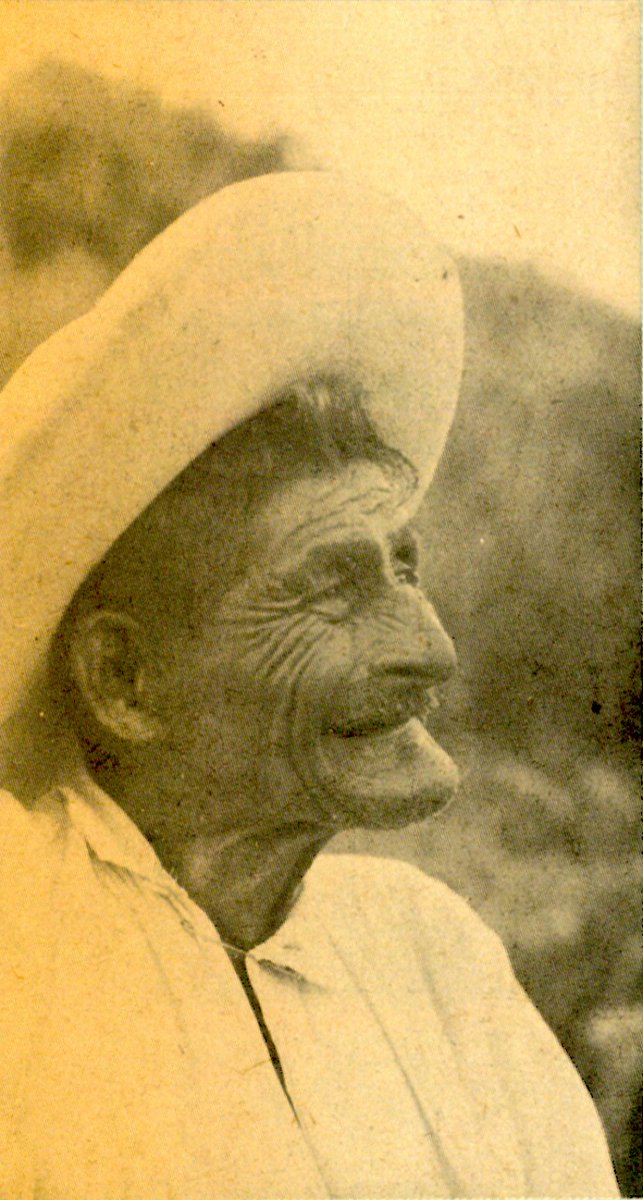For #Archaeology31: Memory, a (long) thread on Modesto González González (c. 1890-1971). If you visited El Tajín between 1925 and 1965, González probably received you with guestbook in hand. Even 10-15 years ago, older visitors to El Tajín still asked about him. 1/12
González was born c. 1890 in Tajín. Raised by godparents, he participated in the Revolution as a young man: "Nos volvieron a agarrar, esta vez los carrancistas, para hacer rondas y guardias, hasta que los carrancistas entraron en Papantla y los federales salieron huyendo" 2/12
Evidently, he was first hired as a “conserje de 5ª clase, con el sueldo diario de $1.50” on 1 June 1923. González worked with a series of guards based in nearby Papantla; they filed reports and he was responsible for the day-to-day upkeep of the site. For example: 3/12
By the 1940s, guards were hired only from El Tajín, and not Papantla. Among the first were two of González's sons, Teódulo and Rosalino González. The former, with a primary-school education, would serve as site encargado from 1944 to 1964. 4/12
The latter happened to guide an American anthropologist, Isabel T. Kelly, during a 1946 visit to El Tajín. As she planned fieldwork in El Tajín under the auspices of the Smithsonian's Institute of Social Anthropology, she intended to contract Rosalino as a paid informant. 5/12
During Kelly's 1947-8 fieldwork, it was Modesto that ended up "general factotum, guide, translator and informant" for Kelly's team, inc. Ángel Palerm, José Luis Lorenzo, Roberto Williams García, and María Cristina Alvarez—all of whom would later become important scholars. 6/12
González continued working regularly until the mid-1960s; more than a few recall that he spent his time weeding the Pyramid of the Niches on a portable school. He died in 1971, after a fall left him unable to walk. He never officially retired, working 48 years at Tajín. 7/12
Though he had been a volador during his youth, he ceased to believe in the traditional religion: "el escepticismo de Modesto se extiende a todos los campos de lo sobrenatural, incluyendo la religión y la super-vivencia del alma.” He is buried off the old camino to Papantla. 8/12
González had at least three wives during his lifetime, and would have at least ten children and three stepchildren. He left a strong impression on visitors: in her 1963 travel guide, Kate Simon comments—incorrectly, and with unfortunate condescension—that: 9/12
Of course, in other contexts, Modesto would comment on his ideas about the Pyramids. Like others, he considered them places of supernatural power. As a guard, he would have supervised more than a few ritual offerings made at the base of the Pyramid of the Niches. 10/12
Archival sources for González's life are unexpectedly rich, but not uniquely so. Much should be remembered about the lives of people who work in places like Tajín. That they're not as well known as the archaeologists is a historiographic problem, not an archival one. 11/12
There's more work on this front; @SalasLanda, @llisonmickel, and Lisa Breglia, for example, have fascinating work on archaeology and labor.
In the spirit of self-promotion, I also have a (Spanish) piece on González: https://revistas.ucm.es/index.php/CMPL/article/view/64505.
Thanks for reading! 12/12
In the spirit of self-promotion, I also have a (Spanish) piece on González: https://revistas.ucm.es/index.php/CMPL/article/view/64505.
Thanks for reading! 12/12

 Read on Twitter
Read on Twitter







